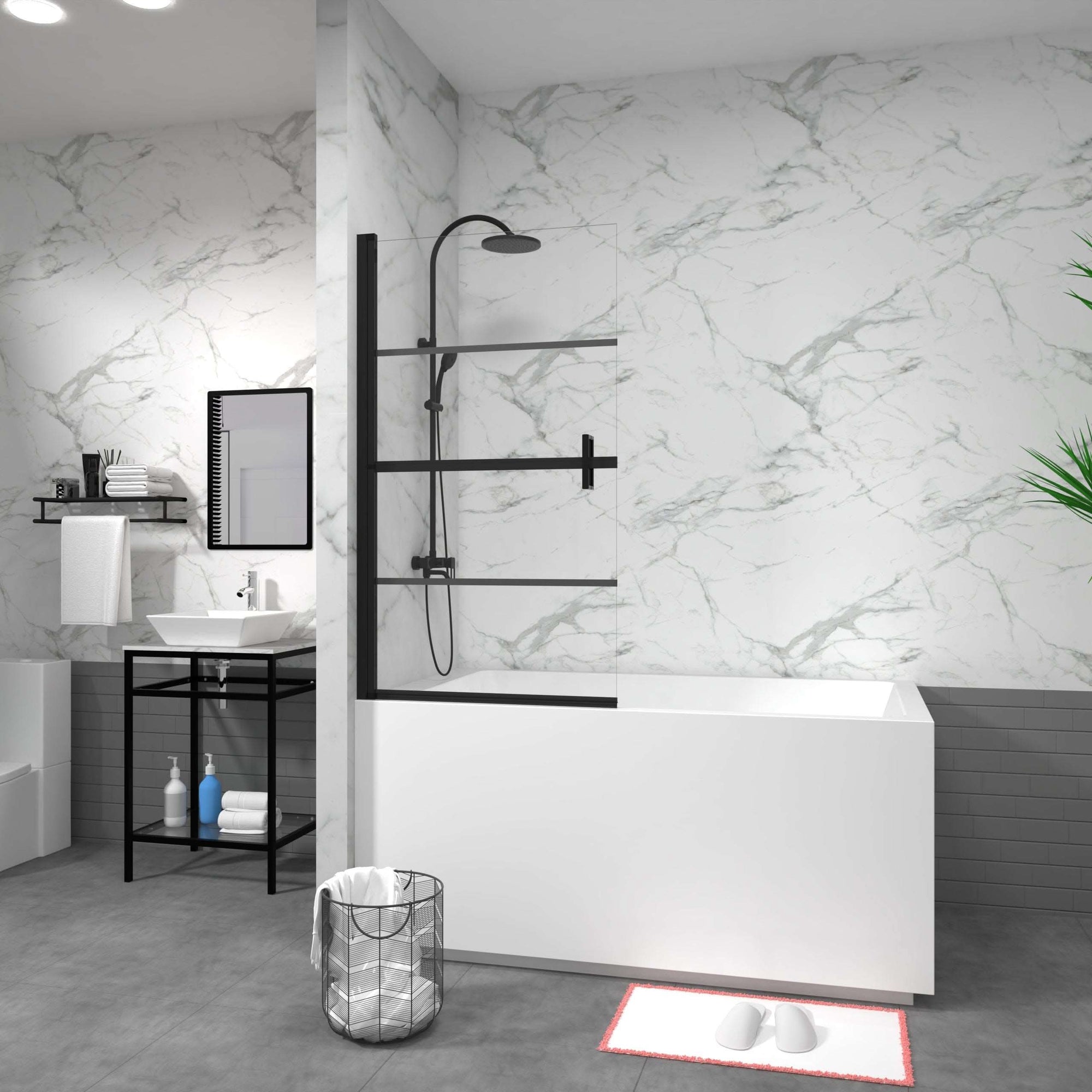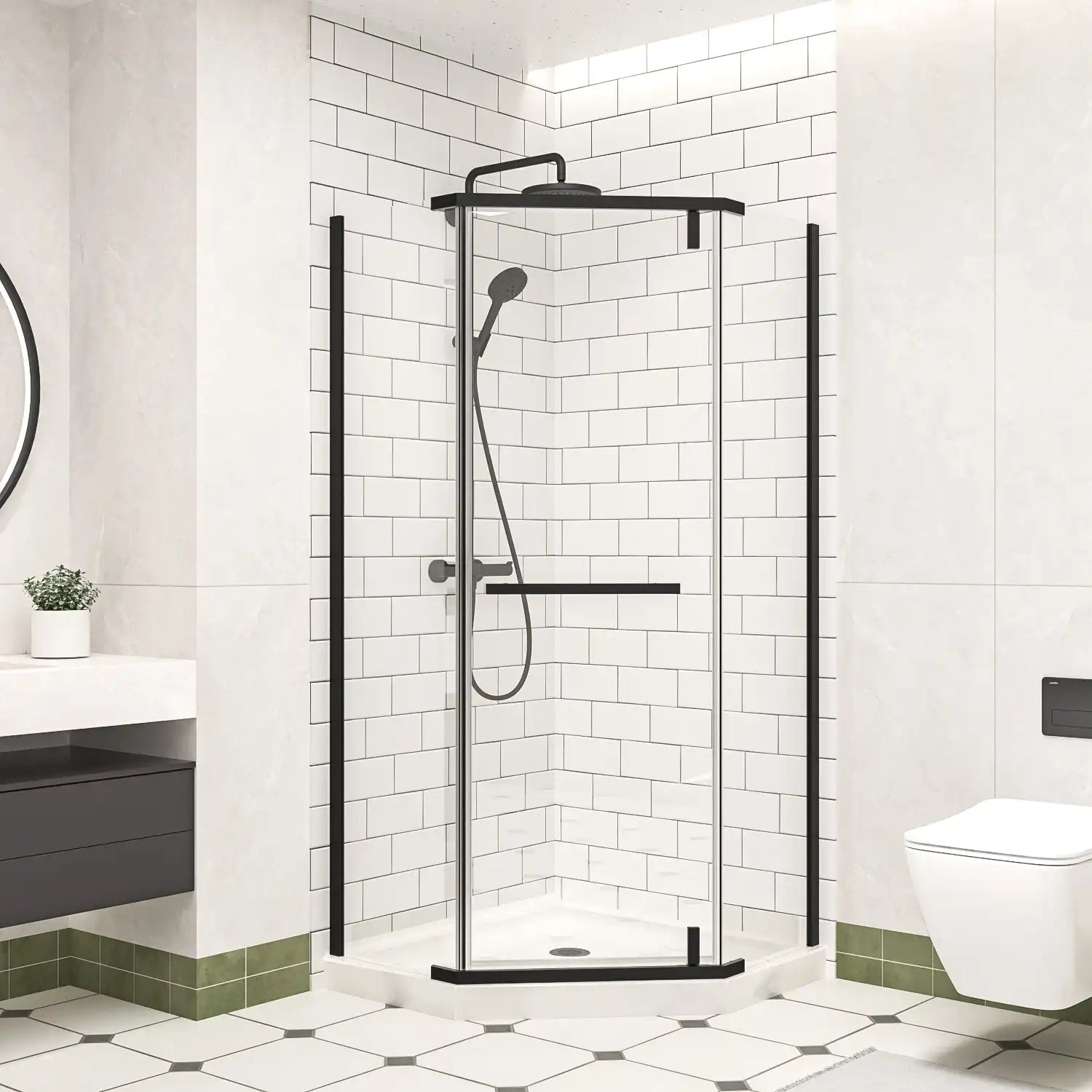Choosing the right bathtub for a small bathroom can feel like a challenging task, especially when you want comfort without compromising on space. Bathtubs are essential fixtures that offer not only a place for cleaning but also a space for relaxation. But what happens when your bathroom lacks the square footage for a standard-size tub? In this article, we will answer the question, "What is the smallest bathtub size?" and help you understand how to choose the perfect bathtub that fits your compact bathroom without sacrificing style or comfort.
Whether you live in an apartment with limited space, are working on a guest bathroom, or simply prefer a smaller soaking tub, we’ve got you covered. Along with answering the key question of bathtub size, we’ll also delve into different tub styles and materials, plus provide practical examples of space-saving designs that can transform even the smallest bathroom.
Why Does Bathtub Size Matter?

Bathtub size plays a crucial role in the functionality of your bathroom. When designing or remodeling a small bathroom, maximizing every inch of space becomes essential. The wrong size tub can overwhelm the room, limit movement, and create a cramped environment. That’s why selecting the right size—whether it’s a freestanding tub, soaking tub, or corner tub—is key to balancing both style and utility.
In most cases, standard bathtub dimensions are about 60 inches long, 30 inches wide, and 14 to 18 inches deep. But when it comes to smaller bathrooms, you’ll want to explore more compact options to avoid overcrowding the space.
What Is the Smallest Bathtub Size?

The smallest bathtub sizes typically start at around 48 inches (4 feet) in length. However, in some cases, there are tubs as short as 45 inches, which still provide enough room for soaking while conserving valuable floor space. For a tub to still be functional, you’ll want to balance length, width, and depth to suit your needs.
Types of Small Bathtubs:
- Compact Freestanding Tubs: These tubs generally range from 45 to 55 inches in length and are ideal for those who want the freestanding luxury in a smaller package.
- Corner Bathtubs: These triangular-shaped tubs can fit snugly into a corner and typically measure 48 inches on the longer side.
- Drop-In or Alcove Tubs: These tubs can be as small as 48 inches and fit into a recessed or three-walled alcove, optimizing space while offering a traditional bathtub experience.
Pro Tip: Keep in mind that smaller bathtubs usually sacrifice length, but a deeper soaking tub can compensate by providing a luxurious bathing experience even in compact dimensions.
Freestanding Soaking Tubs for Small Bathrooms
Freestanding tubs are often seen as a luxurious option, but that doesn’t mean you need a large bathroom to install one. Several compact freestanding tubs provide both elegance and practicality in smaller spaces. Unlike built-in tubs, freestanding tubs can be placed anywhere in the bathroom, giving you more flexibility with your layout.
Example: LY Curved Freestanding Soaking Tub
The LY Curved Freestanding Soaking Tub from ACE DECOR is a perfect example of a smaller bathtub that retains style and comfort. Measuring 59 inches in length, this tub is just slightly larger than the minimum size, offering a sleek, modern design while still providing the luxury of a deep soaking experience. Its curved, minimalistic design makes it a great choice for contemporary bathrooms that need to save space without sacrificing aesthetics.
Compact Egg-Shaped Freestanding Tubs

An egg-shaped tub offers a unique look that can serve as the centerpiece of your bathroom while being compact enough to fit in small spaces. The gently curved sides provide a deeper soak, even if the tub’s footprint is smaller than average.
Example: LY Egg-Shaped Freestanding Soaking Tub
At 55 inches in length, the LY Egg-Shaped Freestanding Soaking Tub is a prime example of how a small tub can deliver a luxurious experience. Its compact size is perfect for small bathrooms or even guest bathrooms, where floor space is limited. The egg shape allows for extra depth, creating a cocoon-like experience that promotes relaxation. This tub is ideal for homeowners who want a spa-like retreat in a more compact form.
Maximizing Space with a Seamless Freestanding Tub
When it comes to small bathrooms, every inch of space counts. A seamless design, where the bathtub blends into the overall look of the bathroom, can make the room appear larger and more cohesive. Seamless bathtubs often feature minimal edges or transitions, creating a clean and uninterrupted look.
Example: LY Seamless Freestanding Soaking Tub
The LY Seamless Freestanding Soaking Tub offers just that. With its compact, 59-inch length and smooth, uninterrupted lines, it’s an excellent option for bathrooms where maximizing visual space is as important as maximizing functional space. Its seamless design gives the illusion of a larger bathroom, while its smaller footprint fits comfortably in tighter spaces.
The Importance of Depth in a Small Bathtub

When selecting a smaller bathtub, you may need to sacrifice some length, but opting for a deeper tub can make up for that. Deeper tubs allow you to fully submerge and enjoy a relaxing soak, even in a smaller footprint. This is especially important if you want a luxurious experience without dedicating too much space to the tub itself.
A standard bathtub usually has a depth of around 14 to 18 inches, but smaller tubs often feature extra depth to ensure comfort. Soaking tubs, in particular, can be up to 22 inches deep, allowing for full immersion.
Design Tips for Small Bathrooms

When incorporating a smaller bathtub into your bathroom design, the goal should be to create a space that feels open and inviting, even if it’s compact. Here are a few design tips to maximize the functionality and aesthetic appeal of a small bathroom:
1. Choose Light Colors
Light, neutral colors like whites, beiges, or soft grays make the room feel larger and more open. Pairing a light-colored tub with matching walls and floors can create the illusion of more space.
2. Add Vertical Storage
In a small bathroom, you’ll want to maximize storage without taking up additional floor space. Install shelves or cabinets above the tub or vanity to keep your bathroom organized while maintaining a minimalist look.
Internal Link: If you’re looking to combine functionality with style, consider pairing your tub with the ACE DECOR GL Cabinet. Its modern design complements a wide variety of bathroom styles, providing much-needed storage without overwhelming the space.
3. Incorporate Mirrors
Mirrors are a great way to create the illusion of more space. Place a large mirror above the vanity or on one wall of the bathroom to reflect light and make the room appear larger.
4. Optimize Lighting
Good lighting can open up a space significantly. Use recessed lighting or wall-mounted sconces to brighten the room without taking up floor or counter space. Natural light is always a bonus, so if possible, keep windows unobstructed to let light flood in.
Frequently Asked Questions (FAQ)

Q1: What is the smallest size for a bathtub?
A: The smallest bathtubs typically start at 48 inches (4 feet) in length, but some compact models can be as short as 45 inches. These tubs are designed to fit into small spaces without sacrificing comfort.
Q2: Are smaller bathtubs less comfortable?
A: Not necessarily. While smaller tubs may reduce the overall length, many offer extra depth or unique shapes, such as egg-shaped tubs, which allow for full-body immersion, providing a comfortable and relaxing experience.
Q3: What are some benefits of a freestanding tub in a small bathroom?
A: Freestanding tubs, especially compact models, add a sense of luxury to smaller bathrooms. They offer flexibility in placement, meaning they don’t have to be built into a specific corner or alcove, allowing you to design your bathroom layout more creatively.
Q4: Can a small bathtub still offer a soaking experience?
A: Yes! Many small bathtubs, particularly soaking tubs, are designed to be deeper than standard models, allowing for full immersion despite their smaller footprint.
Q5: How do I make my small bathroom appear larger?
A: Use light colors, add mirrors, and ensure proper lighting to create the illusion of more space. Incorporating seamless designs and compact storage solutions like the ACE DECOR GL Cabinet can also help optimize the available space.
Conclusion
When space is limited, choosing the right bathtub can make all the difference. The smallest bathtubs, starting around 45 to 48 inches, offer both functionality and comfort, proving that you don’t need a large bathroom to enjoy a relaxing soak. Compact freestanding tubs, like the LY Curved Freestanding Soaking Tub or the LY Egg-Shaped Freestanding Soaking Tub, combine modern design with practicality, making them ideal choices for smaller spaces. By maximizing the depth of the tub, choosing seamless designs, and incorporating smart bathroom layout strategies, you can create a space that feels both open and luxurious.
At ACE DECOR, we offer a range of tubs designed to fit every bathroom size and style. Whether you’re remodeling a small bathroom or creating a cozy guest bath, we have solutions that will meet your needs and elevate the look of your space.





























































































